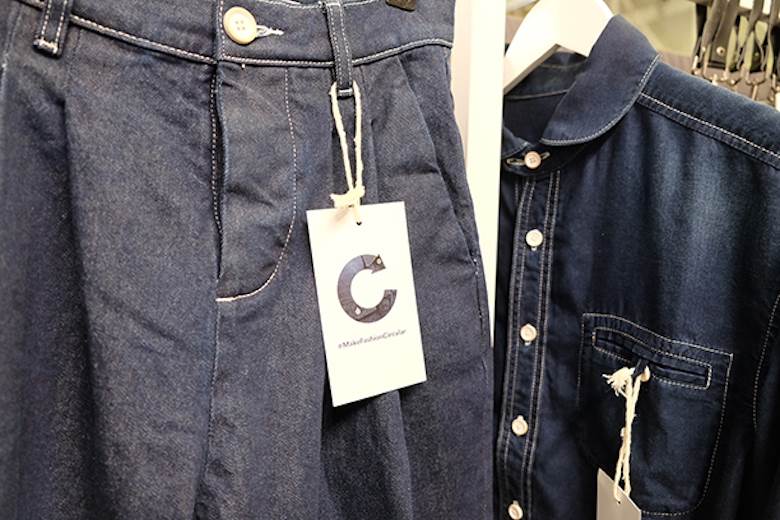Garmon and Stella Blu debut Redesign-ready denim

This past Denim Première Vision in Milan witnessed the announcement of a new, Jeans Redesign-ready capsule between Garmon Studio and Stella Blu.
Garmon is the application laboratory of Garmon Chemicals, the denim-focused textile auxiliaries business unit of San Marino-based chemicals group Kemin. Stella Blu, led by a research and development centre in Padova, Italy, is owned by Chinese denim manufacturer Prosperity Textile.
The Jeans Redesign initiative, launched in 2019, is the brainchild of UK-based circular economy charity the Ellen MacArthur Foundation. It seeks to provide denim jeans stakeholders with a scalable framework, applicable and transferrable across the apparel industry, for making “circular” denim. (Read more about the Jeans Redesign project inside issue 4 of Inside Denim here.)
Whereas fabric #A4017A by Prosperity was used to make the jeans in the collection, Stella Blu’s #5S053 was used for the matching denim shirt.
#A4017A is a 3/1 Z-twill, rope-dyed indigo which weighs 12 ounces or 340 grams and is made from 99% Global Organic Textile Standard (GOTS)-certified cotton, with 1% spandex (elastane) for stretch. On the other hand, #5S053 is a yarn-dyed indigo 2/2 S-twill fabric, which weighs 4.6 ounces or 130 grams and is 100% Tencel (a wood-based cellulosic fibre from Lenzing).
Each garment was developed with the “maximum possible” reduction of waste in mind, the two companies said.
Further, both articles were made using 100% cotton thread, “allowing for complete recyclability of the whole garment”. What is more, lasered logos have replaced the traditional backpatch, the (completely removable) buttons have not been electroplated and both Garmon and Stella Blu “phased out” the use of metal rivets.
The denim shirt’s wooden buttons, which have not been treated with either solvents or hazardous chemicals, can be fully composted within six months “when treated properly”.
Like the garments’ lasered logos, laser technology was employed to etch information which would typically feature on a (now replaced) care label onto each article’s inner side. Instead of a label, the lasered QR code provides “consumers, recyclers, upcyclers and remakers” with the necessary information for handling each item at the end of its useful life.
Wash-wise, as per Jeans Redesign requirements neither pumice stones, potassium permanganate nor any other hazardous chemicals were involved in the making of either the denim jeans or the denim shirt in the collection. Rather, both enterprises described how the treatment used in washing the denim fabrics achieved a “green” score of 24 when it came to assess its impact using Jeanologia’s environmental impact measuring (EIM) software.
Garmon’s patent-pending “smart foam” technology, first unveiled in 2019, was used throughout the washing process, in order to reduce water consumption by up to 80%. All finishing chemicals used have been certified by Scivera and Bluesign and, as a result, are classified as Zero Discharge of Hazardous Chemicals (ZDHC) level three.
The main motivating factor behind the collection, the two companies stated, was to produce denim that not only lasts longer, but is also “easily” recyclable. They commented that the Jeans Redesign framework offers an industry-wide demonstration of alignment, transparency and "real" circularity.
Image: Kemin Textile Auxiliaries.










